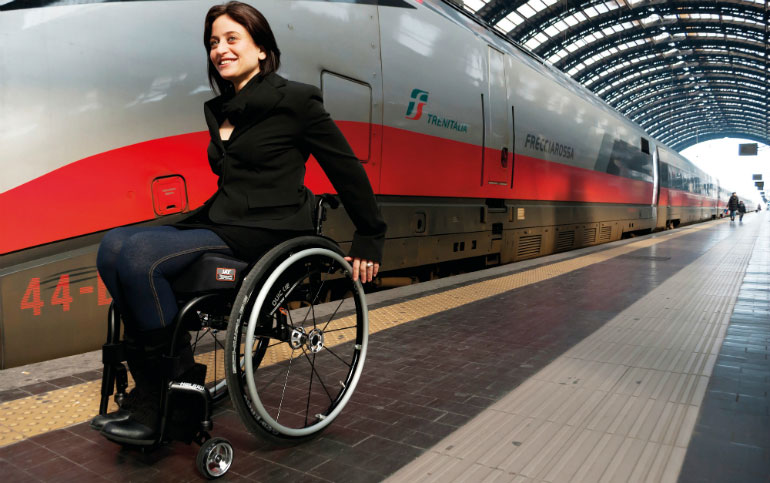Share:
Take it offline!
This Education in Motion resource is also available as a printable PDF.
Download PDF
Mobility affects all aspects of our existence. We continuously move to go to work, go shopping or see friends, so being able to move from point A to point B is very important in our day-to-day life.
Not having accessible transportation is a serious problem for people with reduced mobility because it prevents them from living their lives with freedom and independence, and it is therefore so important that they can access quality transportation services for people with reduced mobility.
Public transport and private transport
Accessibility in terms of transport is a broad concept that refers to both the facilities and infrastructure that provide people with reduced mobility the use and enjoyment of public and private transportation, with the same safety and comfort conditions that other travellers are subjected to, and to the means of transport itself.
An accessible city must provide guarantees that, in addition to having accessible transport lines (buses, metros, trams, etc.), it also has stops, terminals and stations adapted for travellers with reduced mobility. This is what is meant by accessible public transport.
In the case of private transport, which accounts for approximately 50% of transportation used by people with reduced mobility, it will be the companies that provide these guarantees of accessibility, or the users themselves if we talk about adapted vehicles in which people with reduced mobility travel as drivers or as passengers.

Whether we talk about public transport or about private transport, several standards must be met. In many cases, these are logical demands linked to comfort, safety and efficiency in transportation.
If, for example, we talk about travellers with reduced mobility who need a wheelchair, it will need to have the crash test certificate, to be recognized as a suitable wheelchair to be used as a seat in a vehicle, according to ISO 7176-19. The wheelchair must be anchored to the chassis of the vehicle and the passenger must be fastened with a safety belt with at least three anchor points (so that it can cover the chest across the shoulder and pelvis). As far as possible, it is advisable that the chair is equipped with an appropriate an adjusted headrest for transportation.
In addition, the wheelchair should always be located forward facing the direction of travel, as this is how the crash tests accordingly are conducted.
In the case of infrastructures, they must allow every traveller to enter, exit, climb or descend in optimum conditions, and the information provided regarding the use of lifts and platforms must be clear, understandable and easy to use by any user.
Lastly, the different means of transport must have specially reserved spots for people with reduced mobility, seats with floor anchors for wheelchairs and entry and exit systems (lift platforms, ramps, etc.) which are fully accessible.

Reduced mobility and transport: other aspects to bear in mind
Much of the transport for people with reduced mobility is carried out through private services. That is why it is very important to know the criteria for adapting a vehicle.
When purchasing a vehicle, a person with reduced mobility must take into account if he/she is going to drive it, but also if it is just going to be his/her means of transport, so you should check if it is possible to carry out the necessary modifications for each specific case.
You should also be aware that some countries can grant financial aid both for the purchase of a vehicle which has already been adapted, and for its modification, and adjust the value added taxes to the invoice in both cases (purchase or modification).
There are special car workshops in which the modifications and adaptations can be made according to your needs, and whether you are going to drive it or be a passenger. There are also driving schools in which you can practice driving with an adapted car, and take driving lessons if you want to get your driving license.
Having a vehicle of your own adapted to your specific needs and being able to use adapted public services (taxis, buses, aeroplanes, trains, etc.) is a right that cannot always be exercised. Getting it is a joint effort in which citizens, institutions and companies must be involved, allowing us to become a truly accessible society for all.
Do you want to keep up to date with all the information about mobility? We invite you to subscribe to the Sunrise Medical newsletter and you will receive all our updates straight in your inbox.